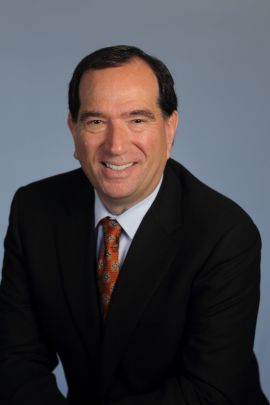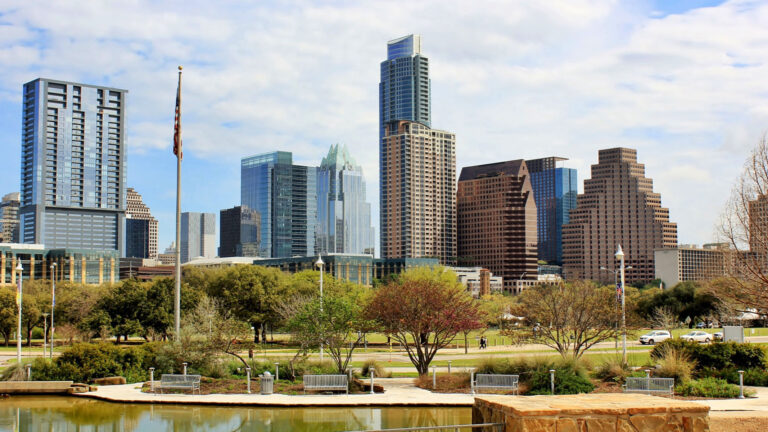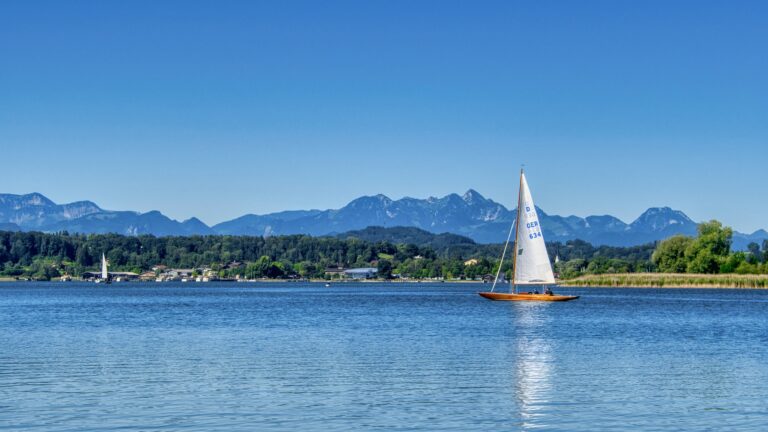The California Institute of Technology’s CIO, recently retired, shares his knowledge on due diligence for sports investments from having bought a major sports team, ways to increase the value of private businesses from having inherited an aerospace business, and lessons learned on emerging markets and investing in mortgages after a downturn.
By Christine Giordano
Not every chief investment officer has the experience of buying and owning
a sports team. Or growing a private aerospace business by 10x.
Scott Richland, the recently
retired chief investment officer of The California Institute of Technology (Caltech)
started there in 2010. It was during a time when Caltech had frozen 30% of its
investments in cash following the Great Financial Crisis. He developed a way to
get things moving again. He also became a surprise aerospace business owner when Caltech received a random inheritance of a business
that was valued at $10 million. During this interview, we’ll discuss how Richland
brought the value of that business up to $100 million before he sold it. We’ll
also talk about his experience as president of a family office and buying a
major sports team, and his advice on due diligence to sports investors. We’ll
also discuss his lessons learned with investments in distressed mortgages, and
with Brazil as an emerging market in his portfolio.
Note: Scott Richland is about to win a Lifetime Achievement
Award at Markets Group’s Southern
California Institutional Forum on June 12. Allocators are encouraged to
come and cheer him on.
Christine Giordano: Welcome Scott. Thanks for being here.
Let’s talk about your career.
Now, since you’re about to get that Lifetime Achievement Award in LA, how did
you actually wind up at Caltech as the CIO for 14 years?
Scott Richland: That’s an interesting story. Actually, getting a Lifetime Achievement
Award at this point is interesting because I’m not sure my life is quite done
yet. Hopefully, I’ll have a few more achievements along the way. In any event,
in 2009, I left the family office, which I think we’ll talk about a little bit
more later. A trustee of Caltech with whom I had worked in the past and with
whom I was very friendly approached me and suggested that I look at the
opportunity at Caltech.
I really had never done anything in higher ed, didn’t know very much
about Caltech. I certainly had never visited Caltech before. I was a little bit
hesitant, but he twisted my arm and I interviewed. Next thing I knew, there I
was sitting behind the desk. I never expected to be there for 14 years. It’s
such an amazing place. It was such an incredible opportunity to work for a
storied institution that it was just a fantastic experience.
Giordano: At
that time that you took the helm, 30% of Caltech’s investments were in cash
following the Great Financial Crisis. What’s the first thing that you did?
Richland: The
first thing we did was to figure out how to restructure the office. Just a
little history is warranted. In the GFC, the investment committee, and somewhat
understandably decided to liquidate some of their more liquid investments,
particularly their fixed income. Of course, what we all know is that when you
raise cash, you actually have to make two decisions. One, when to raise the
cash, and two, when to reinvest the cash. The second decision is actually much
more difficult. They raised the cash in 2008, but they really weren’t able to
pull the trigger on when to reinvest the cash.
I showed up in late 2010, and that cash was still sitting there. The
first thing we did is identify some liquid investments, so public equities,
that we could quickly put the cash into work. Then develop a plan on how to,
over time, invest into more illiquid assets in the private equity, venture
capital, real estate, energy, and so forth. Of course, those take three to five
years, at least, to get deployed and can take 5 to 10 years to actually
generate any returns, but that was what we had to do in order to get the
portfolio back into an asset allocation that made sense for our endowment.
Giordano: During
your time there, you had a random inheritance, a surprise business landed in
your lap. Can you walk us through the story on that?
Richland: Yes,
it was actually quite amazing. We had a donor who, actually, the school was not
aware that he had made a bequest for his entire estate to come to Caltech. Even
more interesting, he was not an alum of Caltech. He lived in Southern
California, was a successful businessperson. He was an engineer and had built an
aerospace parts company, albeit small, but somewhat successful, in the Burbank
area. When he passed away or after he passed away, we were notified that he had
donated his entire estate to Caltech.
The estate was relatively complicated, actually. It consisted of
probably a dozen pieces of real estate spread from Hawaii to the East Coast. We
had a fishing ranch in Idaho, or I guess a fishing lodge in Idaho. We had a
very large home in Southern California. We had a large home in Hawaii that,
unfortunately, required $2 million of capital expenditures to upgrade a wall in
the ocean to prevent more erosion of the beach on which this house was located.
It was a crazy effort. Of course, my office was responsible for
liquidating all of the assets. One of the assets was his business. This was, as
I mentioned, an aerospace parts business, and he specialized in switches and
sensors. It was a very specialized, highly engineered business. He supplied the
switches and sensors to suppliers, to Boeing and to Airbus and to Lockheed, and
to other large aircraft manufacturers. The business actually was losing money
at the time. The gentleman had been ill for several years and, unfortunately,
had not been able to pay the attention to the business that was warranted. It
was losing a few million dollars a year when we acquired it. It was appraised
more or less for its real estate value, which was around $10 million when it
was donated to us.
I looked at this little business, and it happened to be located 10
miles from Caltech. It was convenient to actually drive over there and talk to
the management team there. I recognized that we might actually have an
opportunity to make something bigger of this. We decided, rather than
liquidating the company right away, that we would hold on to it and try to turn
it around. I had the great fortune of having a trustee, John Cutler, who
specialized in aerospace and in aerospace parts throughout his career. I asked
him to join me in working on turning this little company around, and he agreed.
Between the two of us, we spent two years working with management,
replacing some of the management team. I became chairman of the board, and I
worked with the CEO to renegotiate certain of their contracts that had been
money-losing contracts. We sold off some of the real estate that they didn’t
need. Ultimately, we started to generate profits. After a couple of years, we
hired an investment bank to market the business.
That business that was originally valued at the real estate value went
from losing $2 million to making about $4 million. We were able to sell it
through a marketing process for $100 million. Actually, between the selling of
the real estate and the sale of the business, we went from a $10 million
valuation to something closer to $115 million over a three-year period. It was
a very successful transaction. If you go to the Caltech website, you’ll find
many, many faculty members have a named chair or a named fund behind their name
is called the Allen BC Davis Fund, which was created as a result of this
fantastic donation that Mr. Davis made to Caltech.
Giordano: Wow.
What does that fund do now? You mentioned faculty behind their name. How does
it fund?
Richland: The
way the fund works is it’s actually awarded to faculty and gives them extra
funds to use for their research that may not be funded through federal research
grants or through other sources at the school. Mr. Davis has made an incredible
impact on science and engineering at Caltech.
Giordano: Beautiful.
I’m pretty sure that’s how he intended it.
Richland: Absolutely.
Giordano: As an
engineer himself. Congratulations on that, by the way, chair of the board. You
also, as a family office president at one point in your career, a lot of people
are getting into sports investing. It’s becoming very topical, but at one point
in your career, you actually bought a major sports team and became something of
a president over it. Could you describe that experience and maybe some things
that sports investors might want to know?
Richland: Yes.
That was a very interesting experience. I wasn’t president. We had a president,
but I was certainly involved in the governance of the team. It basically
started when the patriarch of the family office I worked for indicated he was
interested in acquiring a sports team. It turned out that he was a big soccer
fan or football fan, I should say. He had actually played tennis and soccer as
a young man. We looked at many different sports, but ultimately concluded that
Major League Soccer, which at that time, this was in the mid-2000s, was really
starting to grow. It had had some stumbles prior to that, but it was getting
back on its feet, no pun intended, and was starting to grow again.
We started to dig into Major League Soccer and what the economics of it
were. At that point, once we decided that it was something that we wanted to
get involved in, we actually reached out to the commissioner of Major League
Soccer. It was a gentleman named Don Garber, who was actually still there, and
indicated our interest in becoming a part of MLS. He actually suggested that we
start a new franchise in St. Louis, which was a big soccer town, but didn’t
have a soccer team there yet. We indicated that while we really were interested
in getting involved, starting a team from scratch, given our little family
office situation, probably wasn’t amongst our capabilities.
In addition, they were required to have a stadium built. They didn’t
even have a soccer stadium there. Again, that was probably more than we wanted
to take on at that time. We indicated to him that we were really more
interested in buying a team that was already established. There were none
explicitly for sale, but he suggested to me that perhaps we could reach out to
Phil Anschutz, who owned a company called AEG, which at that time– and he was
actually one of the co-founders of Major League Soccer, and he owned three
teams, which is a little bit unusual in Major League Sports for one owner to
own three teams, but he actually owned Chicago, Houston, and the LA Galaxy,
which of course was the most famous of his teams and the most successful of the
teams.
I approached Mr. Anschutz’s president, a gentleman named Tim Leiweke,
and asked if he had any interest in selling any of his teams. He originally
indicated no, they were perfectly happy with their teams, but with a little
persistence and calling him every couple of weeks and asking if he had changed
his mind, we eventually got to the point where he said, “Well, we might
think about selling Chicago, make me an offer.” We did, and we did a
little bit of negotiating, and we were able to acquire the Chicago Fire in
2007. It turned out to be an incredibly successful investment.
I was only at the family office for a couple of years after we acquired
the team, but it was quite fun being involved in sports. There’s a lot going on
in terms of figuring out your ticket sales and running the stadium. We were
even involved in trying to get other uses out of the stadium. Get attracting
concerts and other events at the stadium. Of course, the player personnel side
and bringing in international players, and so forth. It was a great learning
experience for me. The team ended up being sold by the family office. I think
it was in 2018 or ’19. As I mentioned, I was long gone at that time, but I can
tell you that they generated more than a 10X return on that sports investment.
It turned out to be very successful.
Giordano: Congratulations
again. What was key to making that team profitable? I know you were president
of the whole family office. I’m guessing you had enough on your plate. You were
handling everything from the investments to the staff of that family office.
Now, all of a sudden, you owned a soccer team. What was key to being in your
role and making this a successful team?
Richland: We
hired a president, and actually we hired a person in the family office who
directly oversaw the investment. He did have a background in sports and in
soccer. He was more involved in the day-to-day running of the team. I was sort
of at a higher level on some non-team-related things. I was not involved in
player personnel and ticket sales and things like that, but I was involved in
running the business. For example, we took in all of the back office
operations. The accounting and the payroll and receivables and payables, and
all of that was brought into Los Angeles from Chicago. We managed all of those
back office operations out of LA.
In terms of your specific question about the profitability, I can’t
actually speak to that because the team was not profitable, as was the case
with most of the Major League Soccer teams, and not all. I think there may have
been one or two teams at that time that were actually generating a profit. I
think, as most people know in sports, it’s not the annual profitability that
necessarily drives the valuation. It’s the popularity and the interest in the
sport that drives the valuations from a lower level to higher levels. That was
certainly the case for Major League Soccer.
We acquired the team for a surprisingly low price. As Major League
Soccer expanded, as it got more TV revenue, as it collected new franchise
revenue, so every time a new franchise was opened, the new owner had to pay in
a new franchise fee, and that was split among the existing owners. That new
franchise fee kept getting higher and higher and higher. More new franchise
revenue was split among the existing owners. That made the teams more valuable
as well.
Christine: Fascinating.
Just some key points. If you’re talking to other people who’d like to invest in
sports, what should they look for? How should they kick the tires on that?
Richland: You
have to look at the trajectory of the business and where their future revenues
are going to come from. I think for most Major League Sports, the majority of
the revenue comes from TV and other outlet rights. Some amount comes from
ticket sales. As you know, there are some teams that are sold out every season,
and so their ticket sales are very strong. There are other teams that don’t
attract quite as much. Ticket sales are less important, but TV revenues are
more important.
What was interesting about Major League Soccer, TV revenue was, at the
time we acquired the business, there was virtually no TV revenue. In fact, I’m
a little embarrassed to say we actually had to pay to be on local TV to have
our games broadcast. We were able to get them broadcast, but the local outlet
said, “But you have to sell the TV advertising, and if you can’t sell the
TV advertising, then you need to pay for the TV advertising.”
Understanding the economics of the team and of the league is obviously incredibly
important. And where it’s going, when does the next TV contract come up?
Obviously, payroll is a big thing.
We had one international player on our team who was very expensive. You
have to make a trade-off. You have to assess what is this very expensive player
going to do in terms of our attendance and in terms of our ability to win
games. In our particular case, would it attract a certain community? This
particular player was from Mexico. He was a very popular player in Mexico.
Would we be able to attract the Mexican-American community to our games as a
result of having this very popular Mexican player on our team? Understanding
those dynamics, of course, is critical.
Giordano: Fascinating.
Great. Shifting gears a little bit, you’ve also had some lessons learned. I
know emerging markets are becoming more of a discussion point. You’ve had some
experience with those. Can you talk about your experience in Brazil?
Richland: Sure.
As most people who’ve been in this business for a while know, emerging markets
go in and out of favor. The opportunity to make money in emerging markets
obviously goes through cycles. In the 2000s, I’d say 12 to 15, emerging markets
was very popular. Of course, China was ripping at the time, was getting very
popular, and was growing very quickly. We made some investments in China. Some
worked out well, some didn’t. We also were looking at investments in South
America.
One of the investments we made, which on its face was very unique, very
niche, and actually relatively safe. It was in Brazil. It was an interesting
strategy where basically payroll loans were being made to government employees,
and the loans were repaid out of the government employee’s paycheck. To the
extent that the person remained a government employee, we were quite confident
that we would be repaid on these consumer payroll loans. They were denominated
in local currency, however, and so the way we thought to control that risk was
to hedge the local currency back into dollars.
What we learned, however, unfortunately, is that hedging, currency
works well if, A, the assets and the liabilities are exactly matched so that
when you’re going to get your foreign currency, you have a hedging contract
that is tied to that time frame where you’re going to get the money and you can
exchange your foreign currency that you’ve received back into dollars and
everything works. If it’s not exactly matched and, more importantly, if you
have a very large devaluation, as we happened to have in Brazil during the time
we had this investment, then currency hedging doesn’t really work because it
becomes much too expensive to actually do the currency hedging. Even if you did
the currency hedging in our case, we were locking in a loss on the transaction.
It turned out we lost money on that transaction. This is one of the few
investments I made during my 14 years where we actually lost money on a
transaction. The lessons learned were to avoid what I call a stroke of the pen
risk. That is a risk where you can wake up one morning, and find that your
currency has been devalued by 20%, 25%, 30% or find out that a new tax has been
put on your business that you weren’t expecting or find out that your business
has just been regulated out of business. That can happen in emerging markets.
Another example, of course, we weren’t hit by it, but people will
recall the private education business in China was regulated out of business
overnight. If you had investments in private education, which was a very
popular sector, you woke up one morning and found out that you lost all your
money in that business. It’s really important to look at the sorts of
businesses you’re invested in and what the variety of risks are, and how you
can potentially hedge them or avoid them. If it turns out you actually can’t
avoid them, if you are subject to, as I said, stroke of the pen risk, it’s
probably best to avoid those types of transactions, and that’s certainly a
lesson I learned.
Giordano: Now,
there’s some practice in tying the currencies to collateral, and as far as the
emerging market investments, was yours tied to collateral at all at that point?
Richland: It
was tied to the loans that were creating cash flow, as the loans were being
repaid through these payroll contributions. When the currency was devalued, the
loans were still being paid in the same amount and the same foreign currency.
However, they weren’t worth nearly as much in dollars as they had been the day
before. When we went to hedge again, to convert those new cash flows back into
dollars, the number of dollars we were going to get, that we were locking in,
was much lower than what we had gotten before, and so it basically destroyed
the investment.
Giordano: Had
there been further collateral in real assets like buildings and such, would it
have mattered?
Richland: Probably
not. The way to make sense is if you’re a dollar investor, if you are investing
in an emerging market that has dollar revenues, and you have a match there,
then it may make sense. Because they actually have dollars coming in, and then
they can potentially pay you dollars from the dollars that are coming, they can
pay you back in dollars, so you don’t have to worry about the exchange rate.
Even emerging market debt, you have to be very careful, because even if
they’re dollarized, unless they have dollar revenues, or they have
dollar-denominated assets, you’re still subject to that emerging market having
to take their existing currency and convert it into dollars, and if they have
to do that, and their currency is greatly depreciated, they may not be able to
afford or they may not even have enough local currency to convert that currency
into dollars. You have situations, for example, in Africa, where from time to
time, the currencies have become virtually worthless, and so it didn’t matter
how many of those local currency units you had, you couldn’t have enough to
convert those into the dollars you needed to repay dollar debt.
Giordano: Interesting.
That was fascinating. You also have some experience with mortgages and credit
markets. Can you talk about that?
Richland: Sure.
We were involved in the mortgage market and, throughout my 14 years at Caltech,
continued to be involved in mortgage markets in one way or another. One
experience that was particularly successful was when we had the mortgage-backed
security disruption in the early 2010s, I think it was probably around 2012 or
2013, and we saw a pretty significant disruption in the MBS market, and we
determined that this was a great time to go in and buy some of these
mortgage-backed securities that had fallen dramatically in price.
We actually went to a couple of different mortgage-backed asset
managers and asked whether or not we could form a separate account for them to
invest on our behalf. We found a great partner in Canyon, and they agreed that
they would start a separate account. They concurred it was a great opportunity
to invest. As you may know, Caltech is a medium-sized endowment at the time. I
think we may have been just under $2 billion, and so we were looking to invest
$40 million in a separate account. Canyon came back to us and said, “This
is a great opportunity, but instead of doing just a small separate account
where you’re going to have to incur a lot of expenses, not just the fees, but
the expenses of setting up the separate account, why don’t we use your $40 million
to anchor a fund, and we’ll raise more money around your $40 million
investment?”
We agreed, and we structured the fund, what I thought was pretty
interesting, which was a two-year investment period and a one-year liquidation
period. One of the risks you have in being in a commingled fund, particularly
in what can be an illiquid asset class from time to time, mortgage-backed
securities being one of those, is that when you’re in a commingled fund, you
have the risk that your partners or the other people that are in the fund may
want to pull their money out at an inopportune time, leaving you, the other
limited partners, left holding the bag, if you will, holding the less liquid
underlying investments. That’s one of the reasons we wanted a separate account,
because we knew we didn’t have that risk.
By structuring this fund as a two-year investment period and a one-year
liquidation period, there was no commingled fund risk. There was no opportunity
for anybody else to get out. Everybody was going to get out after three years
at the same time, and so we were comfortable with joining other partners in
this fund as long as we were all on the same terms. It turned out to be
immensely successful. I think we generated over a 30% annualized return over
that three-year period, which was more than a double over three years, and so
it worked out well for all parties.
Giordano: Considering
that our economy is raising a lot of credit funds, what would be some key
takeaways from that experience?
Richland: In
private credit, I think people need to be very cognizant of liquidity
mismatches. I know right now there are some, shall we say, less liquid asset
classes that are launching into retail products where there are opportunities
to withdraw money in timing that is not directly correlated with the timing of
the return of those underlying investments. I would be very concerned about a
potential run on the bank or run on the fund that would leave the remaining
investors in a perilous situation, or might result in gating, not allowing
investors to redeem their money.
We already saw that, by the way, with BWheat and some other funds,
where there have been some mismatches between retail money and the underlying
assets. Obviously, as well, in credit, we’re going through right now a very
uncertain time in terms of business strategies, both on the buy side in terms
of supply chain, companies that need to bring in, whether it’s raw materials or
finished product that they then sell, great uncertainty about what those
materials are going to cost or whether or not they’ll even be available.
Just recently, we heard that China has now restricted the sale of some
rare earth metals, that obviously is going to have an impact on many
businesses, many manufacturing businesses that require those rare earth metals.
Tariffs will have an impact on the cost of importing materials for
manufacturing here in the US. The flip side is the selling of your products. If
you’re an exporter, if you’re dependent upon foreign markets for selling your
products, one needs to be very aware as you’re making loans to these companies
about what is the status of those foreign markets. Will those foreign markets
be there to continue to purchase these domestic products?
We already know that many countries have, in retaliation or for one
reason or another, have already decided that they’re going to stop importing
certain US products. The one that’s been in the news over the last month or
two, most famously, is Canada not allowing the import of US liquor. Obviously,
that has an impact on the liquor business. There’s many other examples where US
companies who are dependent upon foreign markets, whether it’s agriculture or
manufacturing, or any of our other businesses, are potentially going to be
dramatically impacted by what’s going on right now.
You won’t necessarily see a lot of those impacts immediately.
Inventories need to be sold down. It’s when you have to go through the next
cycle of importing your raw materials when you’ve run out of your current
stocks that’s when we’re going to see the real impact. That may be a month, two
months, six months away, but certainly you’re going to see an impact over the
next, let’s call it, three to six months.
Giordano: Of
course, this is going to be an ongoing discussion, I’m sure.
Richland: Yes.
Giordano: Still
shaking out, as we can see, as each country reacts to our tariffs, and we react
to theirs. Looking back and running through your whole lifetime of experience,
Scott, what would you like your legacy to be? What would you like to be
remembered for?
Richland: I
think I would like to be remembered for my loyalty, my dedication to my craft,
and to my various employers. I’d like to be remembered as a great mentor. One
of the things I’m most proud of is watching the success and seeing the success
of various people that I’ve worked with, who I’ve hired over the years, and
watch how successful they’ve become. One of my first hires at Caltech recently
became the chief investment officer at a large hospital system in Southern
California.
Even though she left the nest from the Caltech office, I couldn’t be
prouder of the fact that she’s now CIO at a great hospital system. I’ve had
others. There’s a gentleman who worked for me back at the family office who
became CIO of a large wealth consultant, and he’s been CIO there for many
years. I hope, as a mentor, I had some small part in helping those people
become successful. I’m terribly proud of the success they’ve had.
Giordano: Great
to hear. Honestly, in sending out the invitations for your celebration, there
was a resounding, “Yes, I’ll be there. I want to speak for Scott.” Congratulations on that, Scott.
Richland: That’s
nice.
Giordano: Thank
you for this interview. I have greatly enjoyed it.
Richland: Thank
you. Thank you for having me.
.












